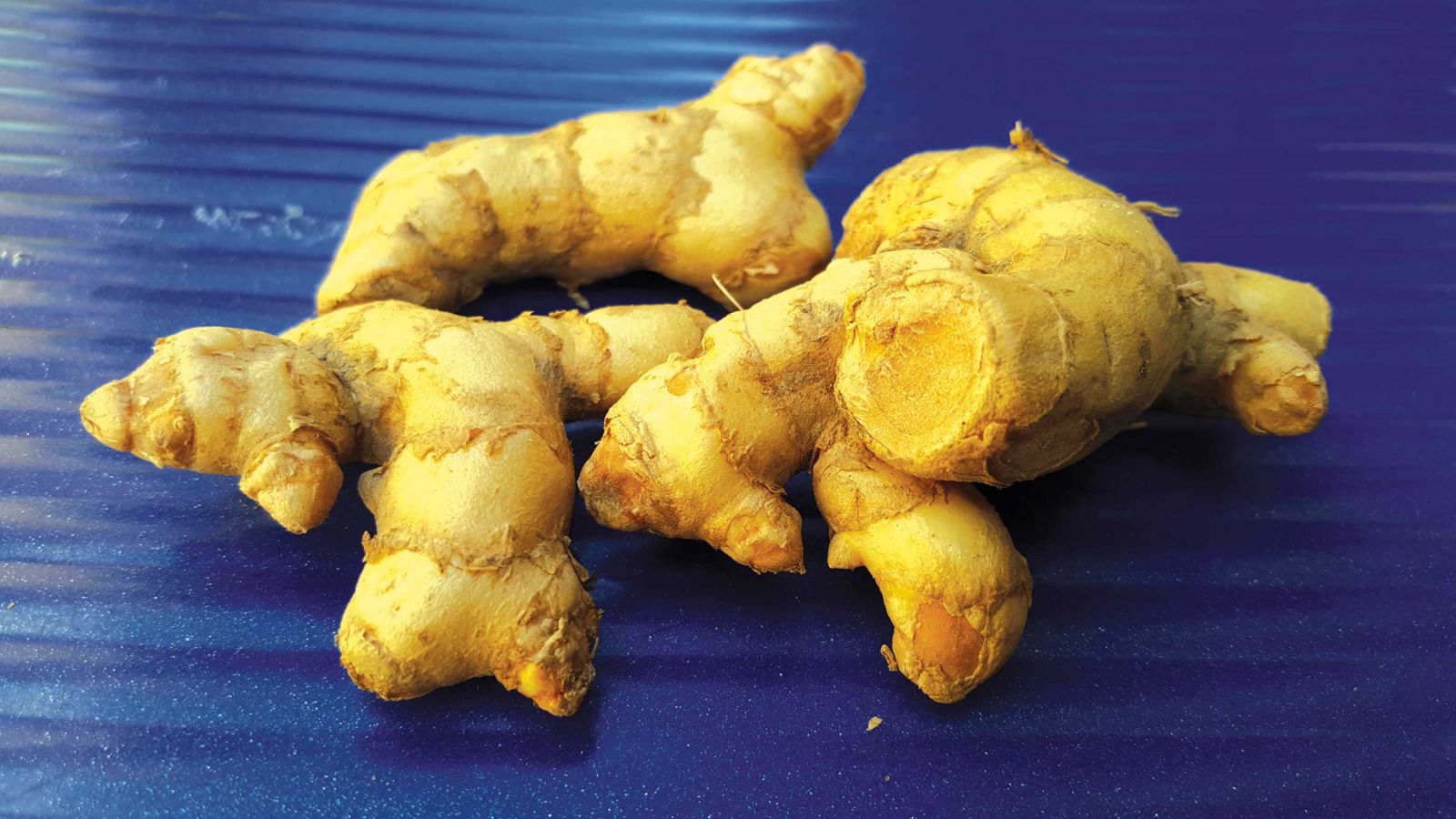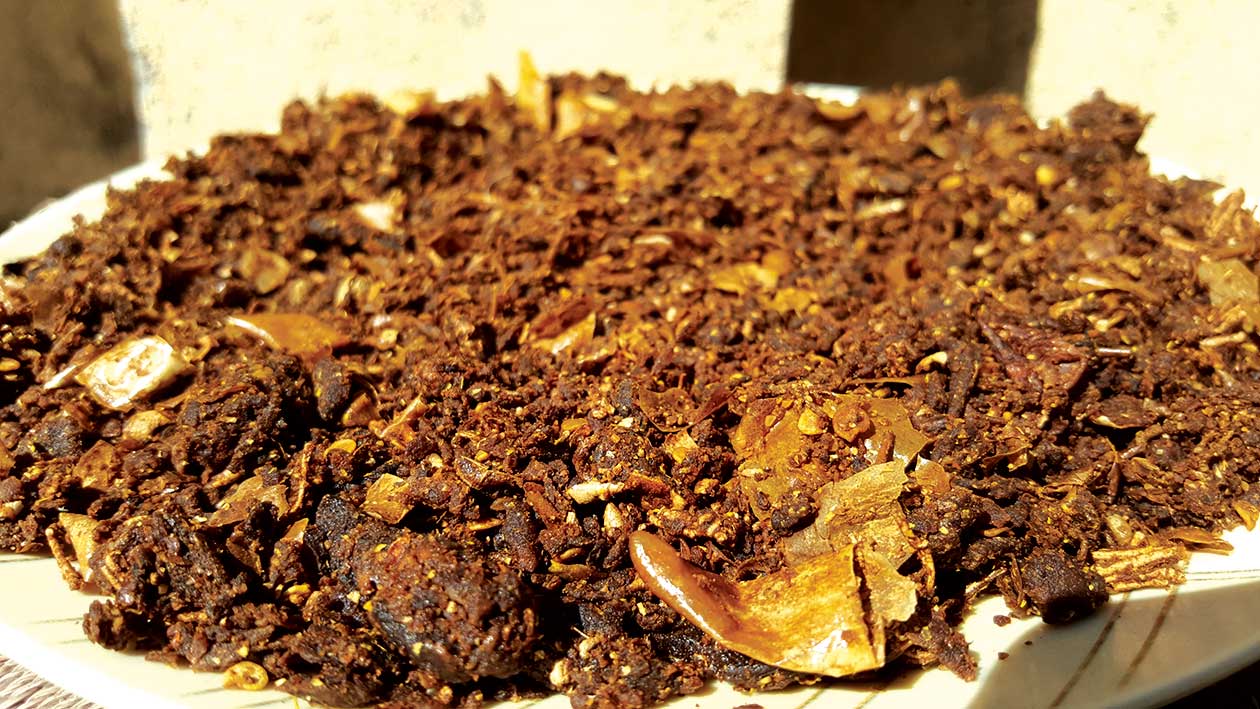
If you go to the southern plains of eastern Nepal and ask for local snacks at roadside eateries, you’ll most probably be served a savory mixture of beaten and puffed rice, chickpea curry, fritters, fried chili, and a special chutney made from amadi.
Amadilooks like ginger or turmeric, but tastes like a raw mango. In eastern Nepal, a mango is called aam, and ginger is called aadi, so these two words might have been combined to derive the word ‘amadi’. In the hilly region, it is called aaphaledo, while in western Nepal, it is called aaphardi, or aamhardi—a combination of aap, or aam, for mango, and hardi for turmeric. Its English name is mango ginger or white turmeric.
 Amadi chutney, tangy but delicious, is also a must-have item at community feasts in the eastern Terai. Made by grinding amadi and chili together and adding mustard oil and salt to taste, the chutney not only adds that extra special flavor, but also helps digestion.
Amadi chutney, tangy but delicious, is also a must-have item at community feasts in the eastern Terai. Made by grinding amadi and chili together and adding mustard oil and salt to taste, the chutney not only adds that extra special flavor, but also helps digestion.
Grown sparsely in the Terai and mid-hills, this root is also used as a medicine. It’s been used in Ayurveda and Greek medicine as a cure for all types of itching and skin diseases and as an appetizer. Recently, researchers in Germany have discovered that it is a good medicine for obesity. Tharus in eastern Nepal believe that it even cures paralysis, and is an antidote for the effects of heat wave.
While different types of pickles can be made from amadi, the oal (elephant foot yam) and amadi pickle stands out among all. For that, you’ll need to gather mango ginger, elephant foot yam, tamarind, green chilies, and other spices. Clean and cut the mango ginger and elephant foot yam into small slices and let them dry for a day. Then, crush them into fine pieces together with tamarind, chilies, and ginger. Add turmeric powder, other spices, and salt to taste, and mix them well. Leave the mixture to dry in the sun again for a day or two and then pack it into a bottle and add mustard oil to it. The pickle can be eaten from the first day itself, but it tastes much better if consumed a few days after it’s made.











